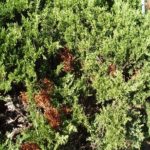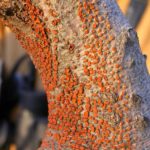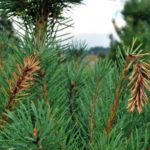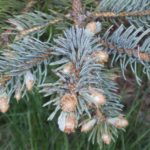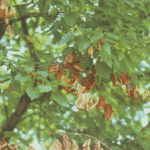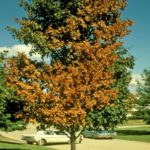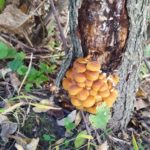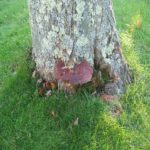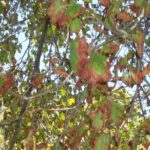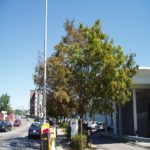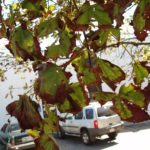With respect to influence on plant growth and health, it is the amount and frequency of rainfall received during the growing season that is of greater significance than the total amount of precipitation in a given year. When defining a drought year, the pattern and frequency of rainfall are clearly more important than the total amount of rain.
Water relations in plants
Water is the major component of the protoplasm which makes up the content of cells.
New cells form and expand from pressure exerted on the cell membranes and walls by water entering the cells.
The driving mechanism for the transport of water through a plant is transpiration or the evaporation of water from plant leaves. Transpiration sets up a negative pressure that drives the movement of water from the soil to the plant and through the plant via the xylem.
Drought effects on plants
In a tree or shrub the delicate root hairs that are responsible for much of the water uptake are first affected by dry conditions and severely impact the plants water absorption.
With the process of photosynthesis being slowed down this could increase the stress of drought on a plant. As the drought persist the plants become vulnerable to secondary attacks by certain insects and diseases.
Before a plant can resume normal growth rates, rebuild damaged plant structures, and resume synthesis of growth regulators and secondary metabolites needed for self-defense, it must re-establish the photosynthetic machinery and normal functioning of the stomates.
Secondary effects
There are certain diseases that are more likely to occur because of drought related stress on the plant. These diseases in combination with weather history at the site can be used in the diagnosis of drought related problems.
Diseases that are likely to occur from drought are root rots, wood rots, wilt and cankers.
Canker type disease that are likely to be encountered due to drought are Nectria and Cytospora cankers, which occur on the stem and branch of trees and shrubs.
It is the inability of the plant to synthesize protective chemicals and to compartmentalize wounds that allow for infection and development of the disease.
